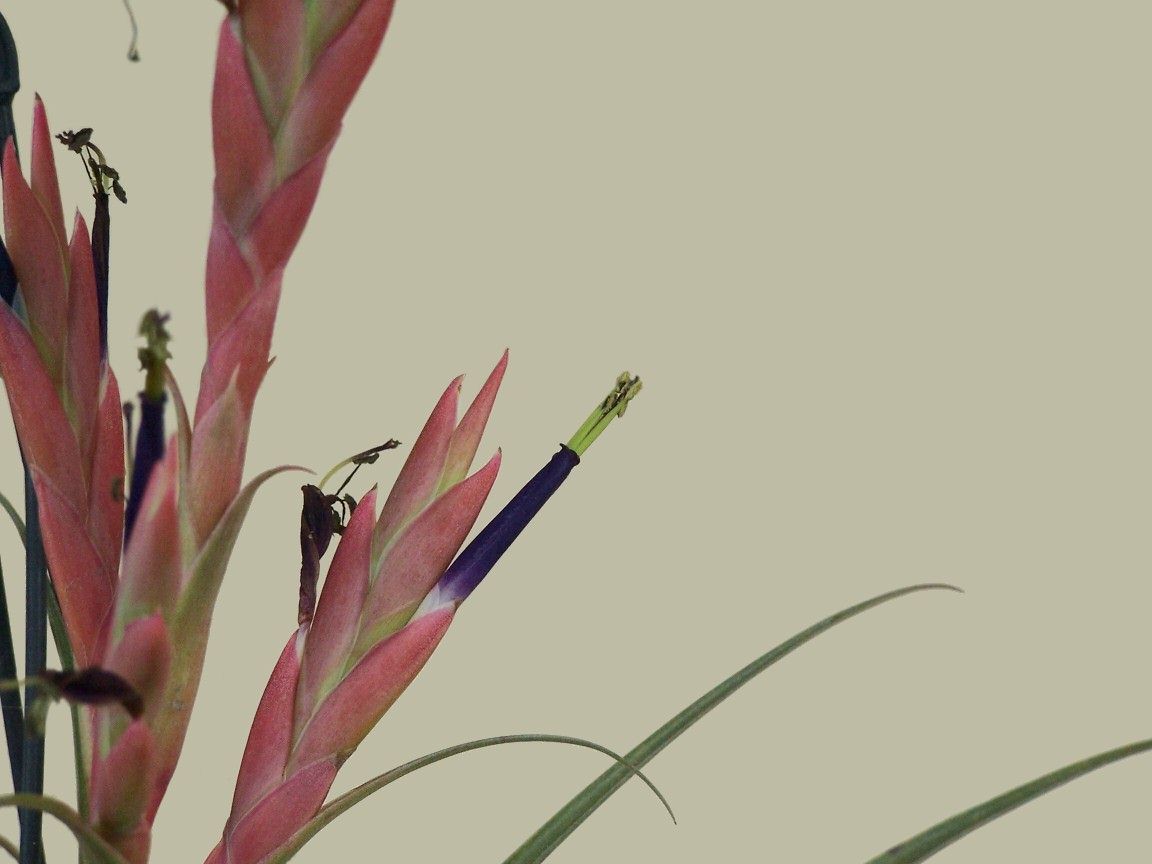

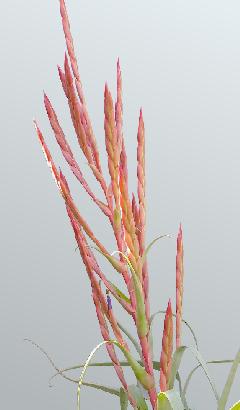
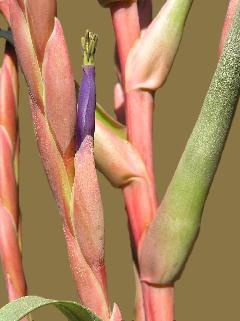
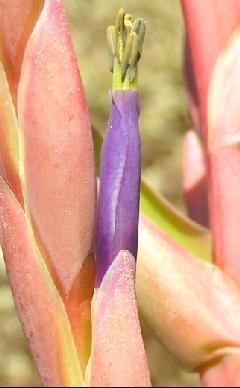
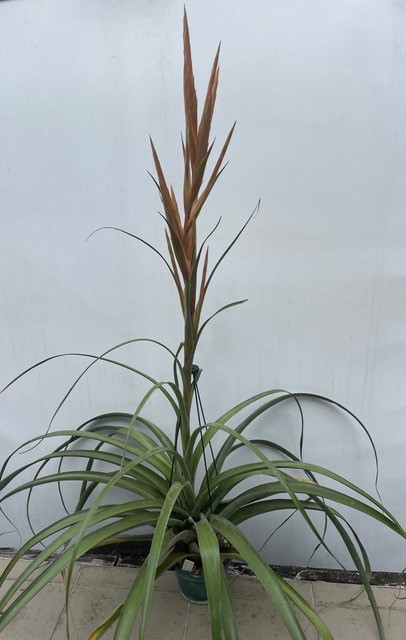
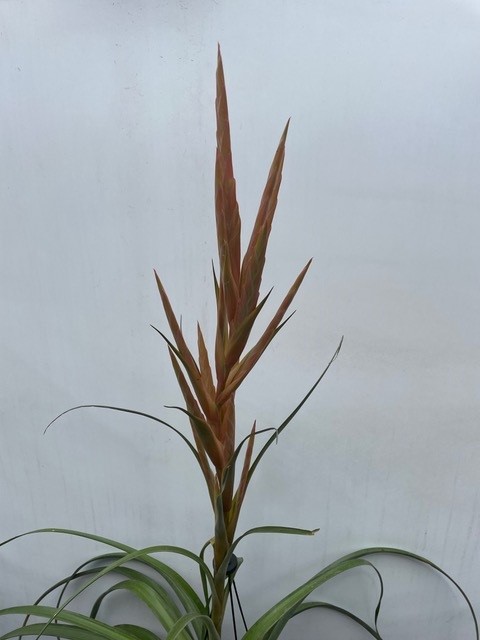
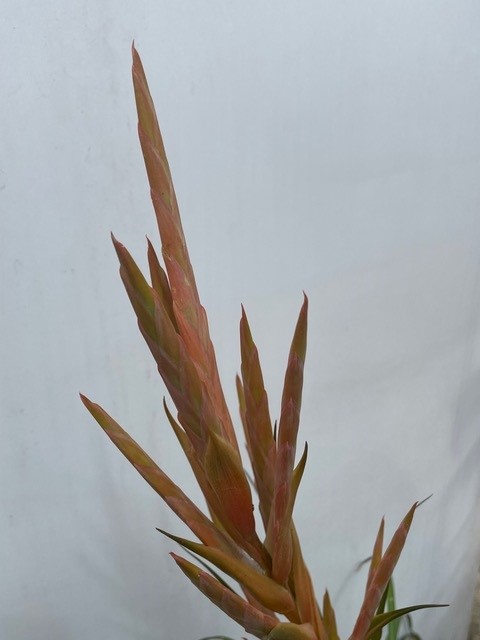
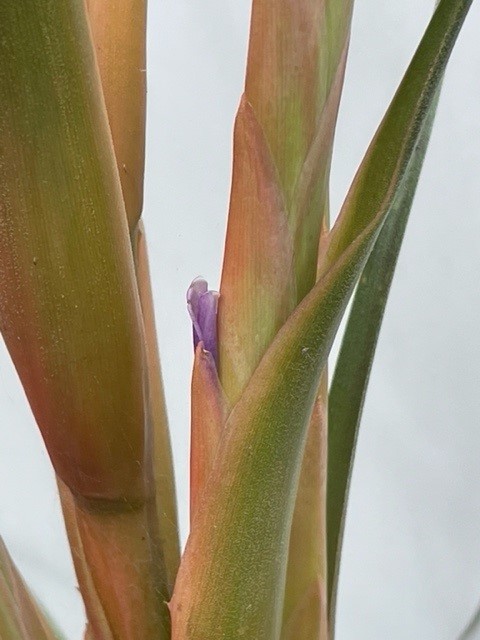
Examined specimens: Guanajuato: Guanajuato, A. Dugès s. n. (GH); Municipio de Jaral del Progreso, Jaral, W. Schumann 1514 (P, US, WU); Municipio de San Luis de la Paz, cerro El Chapín, por Mesas de Jesús, E. Ventura V. & E. López 9837 (IEB(x2), UAMIZ(x2)). Hidalgo: Municipio de Jacala, cerca de Jacala, E. Matuda 38659 (MEXU(x4)); Municipio de Zimapán, 28.1 miles S of Huejutla along hwy to Pachuca, J. Utley & K. Burt-Utley 7325 (MEXU); Municipio de La Misión, 20 miles N of Jacala, O. van Hyning 594 (US(x2)); Municipio de Metztitlán, Meztitlán, R. Ehlers 942403 (M(x2)); Municipio de San Agustín Mezquititlán, ca. 4 km después de Carpinteros, rumbo a Huayacocotla, J. Ceja, A. Espejo & A. R. López-Ferrari 1298 (UAMIZ(x3)); Municipio de San Agustín Mezquititlán, ca. 6 km después de Carpinteros, rumbo a Huayacocotla, ca. 600 m después del ejido forestal La Selva, J. Ceja, A. Espejo & A. R. López-Ferrari 1300 (CICY(x2), UAMIZ(x2)); Municipio de San Agustín Mezquititlán, 3 km al E del poblado El Rodeo, J. L. López G. 411 (IEB, MEXU, UAMIZ); Municipio de Tenango de Doria, 20 miles N of Jacala, O. van Hyning 594 (US); Municipio de Tlanchinol, 4 km al NE de Tlanchinol, sobre la carretera a Huejutla, J. Rzedowski 32687 (ENCB); Municipio de Zacualtipán de Ángeles, alrededores de Zacualtipán, L. González Q. 342 (ENCB); México: Municipio de Tlalmanalco, cañadas 3 km al S de San Rafael, J. Rzedowski 32714 (ENCB); Nuevo León, Municipio de Santiago, Potrero Redondo, A. Contreras s. n. (MEXU); Municipio de Galeana, Sierra Madre Oriental, San Francisco canyon, about 15 miles SW of pueblo Galeana, C. H. Muller & M. T. Muller 324 (GH, MICH, P, TEX); Municipio de General Zaragoza, Sierra Madre Oriental. Dulces Nombres, and just east of border into Tamaulipas, 24° N, 99.5°-100.5° W, F. G. Meyer & D. J. Rogers 2709 (BR); Municipio de Santiago, mountain 20 miles south of Monterrey, J. D. Staub & E. L. McWilliams s. n. (US(x2)); Municipio de Monterrey, second canyon south of Monterrey toward Tampico, R. Ford Smith M30 (TEX); Municipio de Aramberri, Kreuzung vor Aramberri, Schindhelm 2/93 (M(x2)); Municipio de Aramberri, cerro El Viejo, G. B. Hinton et al. 25169 (IEB, TEX); Municipio de Galeana, Agua Blanca a La Purísima, G. B. Hinton et al. 21831 (IEB, MICH, TEX); Municipio de Galeana, Sierra Madre Oriental, cañón de San Francisco, C. H. Müller s. n. (MEXU(x3)); Municipio de General Zaragoza, cerro El Viejo, G. B. Hinton et al. 22691 (TEX); Municipio de Santiago, trail from La Trinidad to Potrero Redondo, C. H. Müller 2954 (GH, LL, MICH, UC); Querétaro, Municipio de Landa de Matamoros, Llano Chiquito, S. Zamudio R. & E. Carranza G. 10233 (IEB, UAMIZ); Municipio de Landa de Matamoros, Joya del Hielo y alrededores, S. Zamudio R. & E. Pérez C. 9918 (IEB); Municipio de Peñamiller, cerro de San Nicolás Molinitos, S. Zamudio R. 5951 (IEB, UAMIZ(x2)); Municipio de Peñamiller, ladera NE del cerro La Tembladera, 10.5 km al NE de Peña Blanca, S. Zamudio R. 9108 (IEB, UAMIZ); Municipio de Pinal de Amoles, al SW de 4 Palos, E. Carranza G. 2976 (IEB(x2)); San Luis Potosí: Sin municipio, Prov. de San Luis, Virlet D'Aoust 682 (P(x3)); Municipio de Guadalcázar, aproximadamente 5 km de San José de las Flores por camino a Los Amoles a la mitad del camino entre ambos poblados, H. Hernández M., C. Gómez & R. Bárcenas 3273 (MEXU, UAMIZ); Municipio de Zaragoza, 3 km al NE de Calera, A. Rivera 29 (ENCB). tamaulipas: Municipio de Cruillas, Cerro Zamora, vicinity of El Milagro, H. H. Bartlett 11154 (GH(x2), MICH(x2)); Municipio de Jaumave, santa Rita Ranch, 40 miles south Victoria, R. Runyon 1033 (GH, US); Municipio de Bustamante, ejido Ricardo García o La Presita, km 66 carretera Victoria-Tula, M. Martínez, M. Martínez & L. Hernández S. 345 (MEXU); Municipio de Hidalgo, near La Caballada, G. B. Hinton et al. 25188 (IEB, TEX); Municipio de San Carlos, Sierra de San Carlos, ca. 5 m of San Carlos, N side of bufa El Diente, G. Nesom, M. Martínez & J. Jiménez 6299 (TEX); Municipio de San Carlos, Sierra de San Carlos en el cerro del Diente, 7 km (en línea recta) al W de San Carlos, M. Martínez & J. Martínez 2042 (MEXU); 2046 (MEXU); Municipio de San Carlos, cerro Bufa del Diente, S. Zamudio R. 11891 (UAMIZ); Tlaxcala: Sin localidad indicada, Schnée s. n. (P(x2).
Sill (Gardner) (2002) pointed out a possible relationship between the substrate and the flower colour, suggesting that those plants with green petals are saxicolous while those with violet petals are epiphytic. Neither the information of our database nor our personal observations confirm this, since we have reports of plants of Tillandsia parryi growing as epihytes (Ceja et al. 1298, 1300) or as saxicoles (Anderson s.n., Zamudio 9108, Carranza 2976, Martínez & Martínez 2042, 2046).
Tillandsia parryi Baker, Jour. Bot. London 25: 277. 1887.
Desc. from S&D p 963-5
Plant stemless. large, probably at least 15 dm high.
Leaves many in a dense utriculate rosette, 4-8 dm long, densely and finely appressed-lepidote throughout;
Sheaths broadly ovate or elliptic, 15 cm long, ferruginous-lepidote;
Blades spreading, narrowly triangular, caudate-attenuate, 4 cm wide at the base, gray-green, often finely purple-spotted.
Scape erect, stout;
scape-bracts erect, densely imbricate, foliaceous.
Inflorescence densely thyrsoid, at least 4 dm long, 12 cm in diameter, purplish;
Primary bracts with a broadly ovate sheath much shorter than the axillary spike and a narrow foliaceous blade often exceeding it, the uppermost merely apiculate;
Spikes strict, short-stipitate or sessile with several reduced sterile bracts at the base, oblong in outline, acute, 15-20 cm long, 2-3 cm wide, complanate with flat sides;
Rhachis slightly flexuous, slender, angled, glabrous.
Floral bracts erect, densely imbricate but so narrow as to expose the rhachis, ovate, acute, 35-45 mm long, 12-20 mm wide, exceeding the sepals, four to five times as long as the internodes, ecarinate, subchartaceous with a broad dark membranous margin, sparsely and obscurely punctulate-lepidote, even or faintly nerved;
Flowers subsessile.
Sepals lanceolate, acute, 25-30 mm long, ecarinate, chartaceous, prominently nerved, glabrous, equally subfree;
Petals tubular-erect, linear, broadly acute, 4-5 cm long, violet,
Stamens and pistil exserted.
Type. Parry & Palmer 873 (holotype K, isotypes GH, US), region of San Luis Potosi, Mexico, 1878.
DISTRIBUTION. Epiphytic and saxicolous, ca 2350 m alt, northeastern Mexico. MEXICO. NUEVO LEON: Pueblo Galeana, Sierra Madre Oriental, 10 May 1934, Muller 324 (GH); La Trinidad to Potrero Redondo, Villa Santiago, 23 Aug 1939, Muller 2954 (GH); Monterrey, 20 Mar 1960, Smith M-30 (TEX). TAMAULIPAS: Santa Rita Ranch, south of Victoria, 7 Apr 1926, Runyon 1033 (GH, US); El Milagro, Cerro Zamora, 25 Aug 1930, Bartlett 11154 (GH, MICH). SAN LUIS POTOSI: Virlet d'Aoust 682 (P); Sierra de Alvarez. San Luis Potosi, 20 May 1951, McVaugh 12282 (MICH). GUANAJUATO :Jaral de Berrio, 17 july 1885, Schumann 1514 (US). HIDALGO: Jocala, 15 Mar 1959, Van Hyning 594 (US).
LOCAL NAME. Jarilla (Runyon 1033).
Tillandsia sueae R.Ehlers J. Brom. Soc.41(5): 208-213. 1991
A Tillandsia parryi Baker, cui affinis, characteribus sequentibus differt: rosula rariter cum prolibus; rami inflorescentiae adscendenti-patentes; bracteae florigerae latiores statu sicco rhachidem plusminusve celantes, carinatae; sepala latiora, ovata, posteriores viventes obtusiter carinata sed sicca carinata; petala violacea. Plerumque epiphytica.
A T. thyrsigera E. Morren ex Baker, cui versimiliter etiam affinis, habitu minore, spicis multo brevioribus angustioribusque et sepalis minoribus ecarinatis recedit.
Typos: Mexico. Estado Puebla: circa urbem Tlaxcala, Martio 1982, R. & K. Ehlers EM 82134 (Holotypus et isotypi WU).
Plant stemless, flowering 60-100 cm high, rosette 60 cm in diameter.
Leaves many in a spreading, funnelform rosette, to 50 cm long, densely and finely appressed-lepidote throughout.
Sheaths distinct, broadly elliptic, to 11 cm long and 6 cm wide, light brown, finely brown punctulate lepidote on both sides.
Blades narrowly triangular, caudate-attenuate, 3 cm wide at base, to 40 cm long, spreading or recurved, green-grey.
Scape stout, erect, short.
Scape bracts foliaceous, few, densely imbricate, concealing the scape, the blades recurved.
Inflorescence thyrsoid, at least 40 cm long, 15-20 cm in diameter, bipinnate to subtripinnate (the lower ones occasionally with a second, smaller lateral spike), compound of 15 or more spikes, inflorescence internodes 2-4 cm long.
Primary bracts with an ovate sheath much shorter than the axillary spike and a narrow, foliaceous, recurved blade exceeding the lower spikes, the upper ones shorter and merely apiculate.
Spikes to 20 cm long, 2-2.5 cm wide, narrowly oblong, dorsoventrally compressed, the flat side directed toward the axis, ascending from 45 to 60 degrees, to 5 cm stipitate, with several sterile bracts at the base, spike internodes 1-2 cm.
Floral bracts erect, densely imbricate, at anthesis rachis not or only slightly visible, rose or green with rose, 3-3.7 cm long, flattened to 1.7 cm wide, exceeding the sepals, ovate, broadly acute, subchartaceous, sparsely punctulate lepidote and inconspicuously nerved on both sides when fresh, slightly carinate.
Sepals 2.5-3 cm long, to 1.1 cm wide, lance-ovate, broadly acute, membranaceous with hyaline margins, green, prominently nerved, glabrous, equally subfree, the posterior ones carinate.
Petals tubular erect, lingulate, apex only slightly curved outward, 5-5.8 cm long, to 0.9 cm wide, violet (#46 amethyst after the color index of Graf in Exotica), base half white.
Stamens and pistil exserted.
Filaments in two series of unequal length, to 6 cm long, the apical third 1 mm wide, ovate in cross-section, green (#80 Nile green), white, thin toward base.
Anthers 3 mm long, elliptical, filaments attached dorsally below the middle, blackish brown, pollen egg-yellow.
Style to 6 cm long excluding the ovary, whitish green, 5 mm violet below the stigma.
Stigma violet, the small lobes erect, papillose.
Ovary 5-7 mm high, 3 mm wide, conical, green.
Tillandsia sueae differs from T. parryi Baker in the following characteristics:
Plant not producing offsets;
Inflorescence branches spreading-ascending;
Floral bracts slightly carinate;
Rachis not visible at anthesis;
Sepals ovate and the posterior ones carinate;
Petals violet, flowering after daybreak, not nocturnal;
Epiphytic.
From Tillandsia thysigera E. Morren ex Baker, it differs in the
Smaller size,
Much shorter and narrower spikes
Nerved, carinate sepals.
Holotype: Mexico. State of Puebla: near Tlaxcala, March 1982, K. & R. Ehlers EM 82134 (WU).
Sue Sill (Gardner) states in her dissertation (1982); "Saxicolous specimens from Valle de las Fantasmas (San Luis Potosi) have noctural, chartreuse flowers, strict inflorescence branches, strict leaves in a narrow funnelform rosette with numerous offsets.
"Epiphytic specimens collected from south of Monterrey (Nuevo Leon) and south of Xilitla (San Luis Potosi) have lavender corollas and post-daybreak anthesis, spreading inflorescence branches, leaves in a spreading, funnelform rosette.
"These types are distinct enough to be recognized as a distinct species."
Sue Sill accomplished an unusual amount of fieldwork and prepared excellent studies on the genus Tillandsia. She was the first to discover the distinction between these two species. For these reasons, it is an honor for me to dedicate the plant to her.
Additional material examined:
T. parryi Baker. Parry & Palmer 873 (Type); Estdo. San Luis Potosi, between San Luis Potosi and Rio Verde, March 1985, R. & K. Ehlers EM 850301, saxicolous; Estdo. Guanajuato, Monte San Felipe, 1988, leg. L. & K. Kohres s.n., saxicolous; Estdo. Queretaro, between San Juan Rio and Tula de Allende, 1988, leg. L. & K. Kohres s.n., saxicolous.
T. sueae Ehlers. Estdo. Puebla, Sahagun, 1988, leg. L. & K. Kohres s.n., epiphytic; Estdo. Hidalgo, Tolontongo, 1988, leg. L. & K. Kohres s.n., epiphytic.
Plant lithophytic, stemless however with rhizome base with strong root ahesion to the rock, forming adventitious offsets at base, blooming 70-160 cm high, 25-70 cm wide, an upright, somewhat extended rosette.
Leaves to 30-80 cm long, thin leathery, dark-green, seemingly grey green because of appressed grey scales.
Sheaths 8-15 cm long, 6-8 cm wide, oval, convex, inside green, outside green-tan, on both sides finely appressed grey lepidote.
Blades a little distinct from the sheaths, 3-4 cm wide next to sheath, 20-65 cm long, narrow-triangular, long caudate, on both sides dense fine gray appressed scales, weakly (dried strongly) nerved.
Scape upright, roughly as long as the rosette, 15-40 cm long, strong, stocky, the sheaths of the few subfoliate scapebracts are imbricate with their long blades bent downward.
Primary bracts similar to the upper scape bracts, the oval sheaths usually as long as stem of the spikes and extensively covering these, the blade of the lower ones to 20 cm long, narrow-triangular acuminate, bent back strongly, the upper ones short tipped.
Inflorescence upright, 40-90 cm long, 4-12 cm wide, long–thyrsiform, bipinnate or sub-tripinnate from 10 to 20 rather upright side-branches, (with bigger copies, the basal spikes still have one somewhat smaller lateral spike). Internodes of the side-branches 2-3 cm. Rhachis round, glabrous, nerved.
Spikes 7-30 cm long, 12-20 mm,( postfloral to 23 mm)wide, lanceolate complanate, with 2-7 cm long sterile double keeled bracts that cover the rhachis, oval, erect, appressed to the spike rhachis, from 3-19 sessile flowers, odorless, Internodes approximately 1 cm, rhachis very flexuous, four angled, glabrous, hardly visible at anthesis, postfloral very clearly visible.
Flower bracts (3.5)3.8–4.6 cm long, somewhat exceeding the sepals, 1–1.4 cm wide, narrow-elliptical, cuspidate, not keeled, thin leathery, nerved, abaxial shining red.
Sepals 2.8-4 cm long, 8 mm wide, acuminate narrow-elliptical, thin leathery, bright green, glabrous, subfree, 1-2 mm connare with the ovary, the posterior pair keeled.
Petals 5.3–5.6 cm long, 7-8 mm wide, tapering to the base at 5 mm, spatulate, tubular, erect, the tips only very little bent outwards, the throat of the Corolla closed, violet, base white.
Stamens protrude from the flower. Filament 5.6–6.2 cm long, in 2 series of unequal length, upper part 1 mm wide, oval, greenish, tapering downward,
Anthers 5-6 mm long, 1 mm wide, linear, joined versatile 1/3-1/4 from the base, tan,
Pollen egg yellow.
Style 5.6-6 cm long, exceeding the filamente by about 1 cm, upper quarter violet, then shiny yellow-green,
Stigma a little wider than the style, lobes upright or very little spreading, sometimes twisted, violet, type II Brown & Gilmartin,
Ovary 7 mm high, at the base 3 mm, conical, bright-green.
Type: Mexico, Estado Hidalgo, Prisma de Basaltico, close to San Regla, lithophytic, 2,200 m msm. leg. Wolfgang Schindhelm, Berlin, March 1991. Paratype EM 942501, 20. 03. 94 leg. K. & R. Ehlers.
The plant grows on steep basalt-rocks at the edge of a big waterfall.
The plant belongs into the group around T. parryi Baker. The feature of violet-blue flowers immediately attracts attention because T. parryi, (from the surroundings of San Luis Potosi), contrary to the statement of Smith, flowers green.
Sue Gardner points out in her dissertation: The plants with lavender corollas have post daybreak and the plants with chartreuse corollas have dusk anthesis". (However she made these statements for the epiphytic growing tillandsias with violet blooms, which have meanwhile been described as T. sueae.) It is to be suspected however that this statement applies also to the other plants from this group.
The plant differs from T. parryi BAKER:
Funnel-rosette more extended,
Spikes usually longer, to 30 instead of to 20 cm long, usually longer stemmed,
Rhachis of the spikes somewhat more thickly and more strongly flexuous,
Flower bracts red instead of salmon-colored or green, narrower, narrow-elliptic instead of oval, internodes small, (Bracts 3 times as long as the internodes instead of 4 -5 times),
glabrous, not punctulate lepidote, nerved more strongly,
Sepals longer, to 4 instead of to 3 cm, the posterior pair carinate,
Petals violet not green-yellow, spatulate not ligulate,
Stigma violet.
Habitat and range:
The plant points out a certain similarity is portrayed with the statement with the plant that in the book of Shimizu: T. aff. parryi or T. sueae, Queretaro, Road from San Luis Potosi towards Xichu. Unfortunately the comparison material arrived post floral: leg. Shimizu 1992 and is now in the Ehlers Herbarium. In March 1994 we were at the type location and only had one post floral example called EM 94170l. The leaves of this plant are somewhat leathery, the blooms are also violet, the internodes of the floral bracts are even smaller, these are roughly as long as the sepals. We must wait for a second flowering.
Question: Can the same type have green and blue flowers? Should they be a variety on the basis of the not very big other differences? or even subspecies? Or is it an individual type?
No single Tillandsia, that would flower either blue or green, is known to me. In all cases where such statements were done, it was proven that 2 different types were mixed, for example T. violacea and T. prodigiosa, T. limbata and T. dasyliriifolia.
Dear Mr. Till,
I was convinced at the location that it must be an unknown species. The spikes originate without a scape from the rosette, as with T. deppeana, the Primary bracts are very long, there are more side-branches, Rhachis is visible at the time of anthesis, and sepals are narrower.
But now at home I have my doubts as to whether not it could be T. sueae